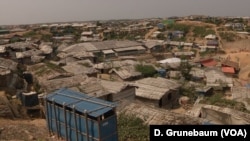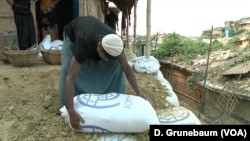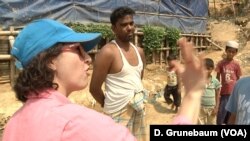Damage from Cyclone Fani in eastern India and southwestern Bangladesh last week is raising concern about what could happen if a similar storm struck southeastern Bangladesh, which has a large refugee population.
A disaster risk reduction specialist for the United Nations refugee agency (UNHCR) based in the border town of Cox’s Bazar tells VOA there are an inadequate number of cyclone shelters.
Fani killed dozens of people and left hundreds of thousands homeless. However, India is being credited with preventing more deaths by evacuating more than 1 million people.
Vulnerable camps
More than 700,000 Rohingya Muslims have fled to Cox’s Bazar from neighboring Myanmar since August 2017 because of a military crackdown. The refugees now live in overcrowded camps that are vulnerable to storm surges, floods and landslides.
Before the recent influx of Rohingya into Bangladesh there were already more than 200,000 Rohingya refugees in Cox’s Bazar whose families had fled previous bouts of violence. Plus there are approximately a half-million Bangladeshis who live in the subdistricts near the camps.
Emergency response workers say it’s impossible to predict how much damage the area would suffer or what the death toll would be if a cyclone struck, but life and death concerns are being raised about the refugees, as well as the local host community.
Few cyclone shelters
“UNHCR has not built any cyclone shelters in the refugee camps,” said Marina Drazba a disaster risk reduction specialist for the refugee agency. “There are only enough cyclone shelters to accommodate about 20 percent of the local Bangladesh community that lives near the camps. We need more cyclone shelters.”
Drazba said UNHCR wants to build cyclone shelters in the refugee camps but is not able to because the Bangladesh government has imposed tight restrictions on building them as well as any other permanent structures.
Bangladesh has been overwhelmed by the massive number of refugees and is hesitant to take steps that would make it appear that the refugees who’ve come in recent years will be staying for the long term.
“If a cyclone hits Cox’s Bazar, we [emergency teams] have very good plans in place when it comes to responding in the aftermath,” Drazba said. “But when it comes to what steps need to be taken before a cyclone strikes, more needs to be done.”














